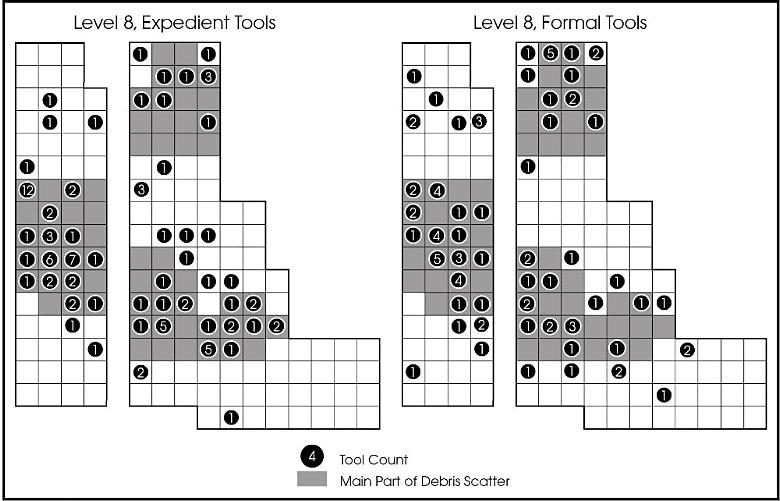| This indicates that most activities associated with tools usually were performed close to the hearths and their surrounding debris scatters. The many expedient tools in these locations probably means that people selected flakes from the lithic debris piles for immediate use and then discarded them on the spot. Formal tools such as woodworking tools had more varied use histories. They are more likely to have been moved away from their place of manufacture or use, and thus they occur more often around the edges of or just beyond the main parts of the debris scatters.
Looking at the individual types of formal tools, it was hard to see patterns suggesting that people used or discarded different kinds of tools in different places, in part because of the small numbers of tools within many of the categories. One pattern may be worth noting, however. Specifically, arrow points and knives and their preforms occur more consistently within the cores of the debris scatters than do all other formal tool categories combined (71 vs. 59 percent). This is probably because arrow points and knives were the two main intended products that resulted in creation of the stone debris piles, and when they broke during manufacture they were discarded on the spot. |

